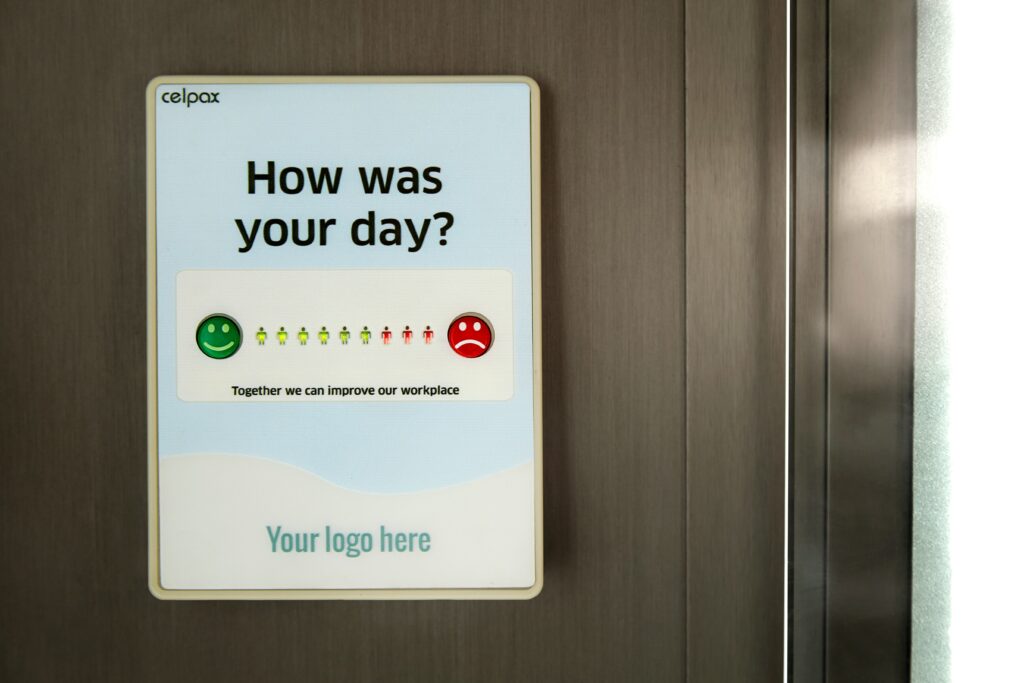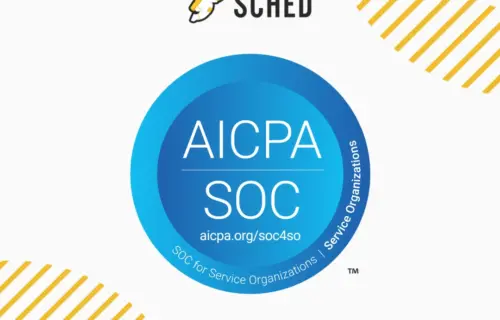- Streamlined scheduling and access: Learn how event software can transform the logistics of parent-teacher conferences, offering flexible scheduling options and diverse meeting formats such as virtual platforms, ensuring every parent can participate, no matter their constraints.
- Enhanced communication: discover the benefits of enhanced pre-conference preparation, including detailed academic reviews and tailored discussion points, which lead to more focused and effective meetings.
- Real-time data utilization: Find out how incorporating real-time academic performance data into meetings can make discussions more relevant and targeted, helping to create actionable strategies for student improvement.
- Increased parent engagement: Understand the importance of continuous communication, facilitated by event software that helps keep parents informed and involved throughout the school year, not just during scheduled conferences.
- Effective follow-up Strategies: Gain insights into effective follow-up strategies that ensure the discussions from conferences translate into real-world results, with personalized follow-up actions, regular updates, and inclusive communication for all parents.
- Building stronger partnerships: Explore how event software can help build stronger, more collaborative relationships between parents and teachers, fostering a supportive environment for students’ educational success.
- Post-conference benefits: Read about the long-term benefits of using event software for parent-teacher conferences, including how it facilitates ongoing dialogue and engagement, leading to better educational outcomes for students.
Tired of the logistical headaches and limited engagement in traditional parent-teacher conferences? Event software is here to change the game.
This article will guide you through how these tools streamline scheduling, enhance communication, and ensure effective follow-ups, making meetings more accessible and discussions more data-driven.
Discover how you can overcome common challenges and empower parents to engage fully in their child’s education.
Dive in and unlock the potential of these innovative platforms to improve student outcomes and transform your approach to educational partnerships!
The limitations of traditional parent-teacher conferences
Table of contents
- 1 The limitations of traditional parent-teacher conferences
- 2 Streamlining scheduling and participation for your parent-teacher conference
- 3 Enhancing communication before and after your parent-teacher conference
- 4
- 5 Real-time engagement and feedback mechanisms for your parent-teacher conference
- 6 Post-parent-teacher conference follow-ups and action plans
- 7 The takeaways

Parent-teacher conferences, while invaluable, face several logistical and communication challenges that can hinder their effectiveness.
- Scheduling constraints: Traditional conferences are typically scheduled on specific days and times, which may not be convenient for all parents or teachers. This can result in limited participation or rushed meetings due to the need to accommodate multiple parents in a single day.
- Limited time for each meeting: Due to the format of these conferences, each parent-teacher meeting is usually brief, often only 10-15 minutes per student. This time constraint can hinder meaningful discussion or problem-solving and may not be sufficient to address specific concerns or provide a comprehensive overview of the student’s progress.
- Lack of continuity: Traditional conferences typically occur once or twice a year, limiting ongoing communication between parents and teachers. This infrequent interaction can lead to missed opportunities for timely interventions and support for students when issues first arise.
- Accessibility issues: Not all parents are able to attend in-person meetings due to physical disabilities, transportation issues, or other personal constraints. This can create disparities in how well-informed and involved different parents are in their child’s education.
- Limited documentation and follow-up: Discussions during these conferences are often verbal, with few written records or actionable plans being systematically documented and followed up. This can lead to misunderstandings or a lack of accountability for the resolutions discussed.
- Language and communication barriers: Effective communication during parent-teacher conferences can be obstructed by language differences.
- Engaging parents effectively: To counteract low parental involvement, schools can provide detailed resources about students’ progress and what can be done at home to support learning.
- Handling sensitive topics: Discussing areas where a student struggles is a delicate aspect of parent-teacher conferences. Teachers need strategies to deliver constructive feedback effectively, ensuring that the conversation remains focused on solutions and student growth.
- Technological challenges: With the rise of virtual meetings, new challenges have emerged, such as inappropriate environments or technical issues during conferences. Schools must provide guidelines and support to ensure these meetings are as productive as in-person ones.
BONUS – Make your next parent-teacher conference the best ever by utilizing our guide to mastering in-person events!
Streamlining scheduling and participation for your parent-teacher conference
How to Create an Event Schedule that Will WOW Your Attendees from Sched Support on Vimeo.
Event software has revolutionized the organization of parent-teacher conferences by offering streamlined scheduling and flexible participation options. Below are actionable strategies and real-life examples that highlight the effectiveness of these tools:
Send informative invitations
- Teachers can send detailed invitations that highlight the importance of attending parent-teacher conferences.
- These invitations provide multiple time slots, allowing parents to choose the most convenient option.
- This approach not only emphasizes the significance of their participation but also respects their scheduling needs.
BONUS – If you want to send invites to your parent-teacher conferences that are simply irresistible, use these Magical AI event-planning prompts to get better descriptions than ever!
Simplified appointment scheduling
With just a few clicks, families can access all conference details and secure a time slot. This convenience is crucial.
BONUS – This is easily done at your next parent-teacher conference when you follow our guide to creating an effective event agenda!
Diverse meeting options
Event software supports various meeting formats, including in-person, phone, and virtual platforms like Zoom, MS Teams, and Google Meet.
This flexibility ensures that every parent can engage in a way that suits their circumstances, removing barriers such as long work hours or commute distances.
Efficient time management
Tools allow for the addition of buffer times between meetings. This feature is essential for teachers to manage back-to-back appointments efficiently, ensuring they have adequate time to prepare and conclude each session effectively.
Enhancing communication before and after your parent-teacher conference

Preparing for effective communication
- Engage students in preparation: Encourage students to think about what they would like to discuss during the conference. This not only prepares them for a constructive conversation but also helps teachers understand their perspectives and concerns.
- Review academic performance: Prior to the conference, both teachers and parents should review the child’s academic progress. This includes test scores and attendance records available on platforms. This ensures that all parties are informed and can have a focused discussion on the student’s educational needs.
- Develop a list of discussion points: Compile a list of topics and questions to address during the conference. This might include inquiries about curriculum details, behavioral aspects, and ways parents can assist at home.
Setting the stage for open communication
- Regular interaction: Establish regular communication through various channels such as in-person meetings, phone calls, emails, or text messages. This builds a foundation of trust and eases the flow of information.
- Utilize diverse communication tools: Leverage tools like homework handouts, newsletters, and class websites to keep parents informed about classroom activities and their child’s progress.
- Collaborative environment: Teachers and parents should work collaboratively to foster a positive learning atmosphere for the student. This partnership is crucial for addressing educational challenges and celebrating successes.
Conference preparation strategies
- Organize Essential Materials: Prepare all relevant documents such as progress reports, assignments, and notes on the student’s behavior and achievements. Having these at hand during the conference makes the discussion more concrete and actionable.
- Create a welcoming atmosphere: Arrange the conference area to be inviting, possibly showcasing student work. This sets a positive tone and makes parents feel appreciated and involved.
- Focus on positives first: Begin the conversation by highlighting the student’s progress and strengths. Use specific examples from assignments or tests to demonstrate growth and areas for improvement.
- Clarify educational jargon: Avoid using too much professional terminology. Explain any educational terms, curriculum titles, or acronyms clearly to ensure parents fully understand the discussion.
- Encourage parental feedback: Actively seek input from parents regarding their child’s learning preferences, strengths, and areas needing support. This helps tailor educational approaches to suit individual student needs.
- Plan for follow-up: Conclude the conference with a clear action plan, outlining strategies, timelines, and preferred methods for ongoing communication. This keeps both parties accountable and engaged in the student’s educational progress.
Real-time engagement and feedback mechanisms for your parent-teacher conference
Excel Your Events: Access Reliable & Robust Reporting Tools from Sched Support on Vimeo.
Utilizing data-driven conversations
- Continuous progress monitoring: Event software enables real-time tracking of students’ academic performance, which can be shared during parent-teacher conferences. This approach ensures that discussions are based on the latest data, allowing for more informed decisions and targeted educational strategies.
- Enhanced student involvement: Incorporating students in the conferences via event software encourages them to engage actively. They can present their own achievements and challenges through digital portfolios or presentations, fostering self-reflection and accountability.
BONUS – Make sure you avoid the chaos of poor attendee feedback practices at your next parent-teacher conference!
Encouraging direct feedback from students
- Building self-reflection skills: By having students lead parts of the discussion about their progress, they develop important skills in self-assessment and goal setting. This not only boosts their confidence but also makes the educational process more transparent for parents.
- Immediate reactions and adjustments: Event software often includes features like live polling or instant feedback tools. These can be used during conferences to gauge parent and student reactions to the topics discussed, allowing immediate clarification or adjustment of teaching strategies based on real-time inputs.
Grounding conversations in data
- Real-time access to educational metrics: Parents can view real-time data on their child’s performance during the conference. This might include test scores, homework completion rates, and more, all aggregated by the event software for easy access.
- Facilitating data-driven discussions: With comprehensive access to educational data, conversations can remain focused and productive. Parents and teachers can quickly identify areas of strength and concern, making it easier to develop personalized action plans for students.
Post-parent-teacher conference follow-ups and action plans

Send thank-you notes and summaries
- Personalized appreciation: Send a personalized thank-you note to each family that attended the conference. Include a summary of the main discussion points, reiterate the action steps discussed, and invite them to contact the teacher with any further questions or concerns.
- Engagement for non-attendees: For parents who couldn’t attend, send a similar note along with an offer to schedule another time to discuss their child’s progress, demonstrating inclusivity and commitment to every student’s academic success.
Regular updates and feedback
- Consistent communication: Share regular updates about students’ progress, achievements, and challenges. Ensure that these updates are specific, timely, and consistent, ideally using the event software to automate and schedule these communications.
- Actionable insights: Provide parents with actionable insights and practical advice on how they can assist with their child’s learning at home, thereby fostering a proactive educational environment.
Encourage ongoing parental input
- Soliciting feedback: Actively request input from families on the educational materials and teaching methods being used. Show appreciation for their insights and consider them in planning future curricula.
- Collaborative problem solving: Address any post-conference issues or concerns collaboratively. Invite parents to participate in problem-solving discussions, either through scheduled meetings or informal digital communications.
Schedule future engagements
- Continuous engagement: Schedule another conference later in the school year to review the student’s progress and adjust plans and strategies as necessary. This keeps the dialogue ongoing and reassures parents of the school’s commitment to their child’s education.
- Community platform: Create and maintain a digital platform for continuous communication between parents, teachers, and school management. This platform can serve as a hub for all stakeholders to share information and support the student’s educational journey.
Documentation and follow-up
- Record keeping: After the conference, document all notes, observations, and suggestions. Use these records to tailor follow-up communications and educational strategies.
- Inclusive follow-ups: Reach out to all parents, including those who did not attend the conference, with updates on their child’s progress and an invitation to discuss it further. This ensures that all families are kept in the loop and feel valued.
Solicit and act on feedback
- Feedback on the conference: Allow families to provide feedback on the conference itself. Ask them about their preferred communication methods and make a note to adapt to these preferences in future interactions.
- Follow-up calls: Make follow-up calls to a select group of families, especially those whose children have shown significant progress or who have specific next steps to discuss. This personalized approach can significantly enhance parental engagement and satisfaction.
The takeaways
Now you have the secrets to super-charging your next parent-teacher conference. And better still, you can start Sched for free now and start reaping the rewards immediately!








